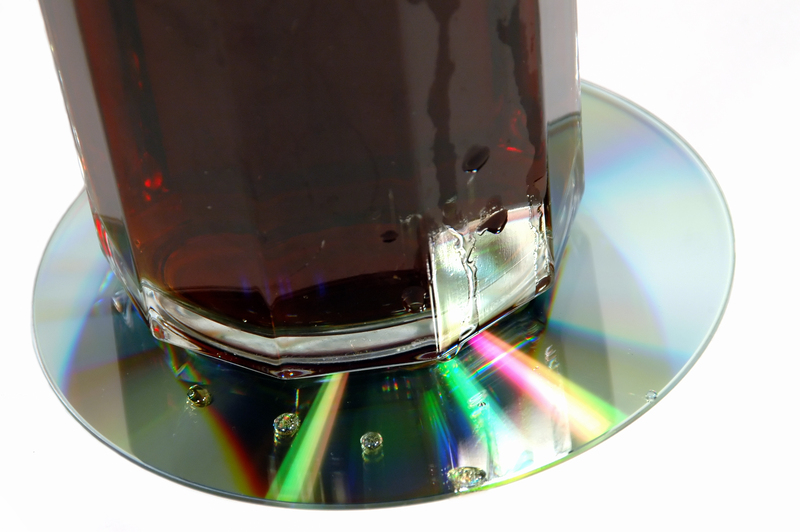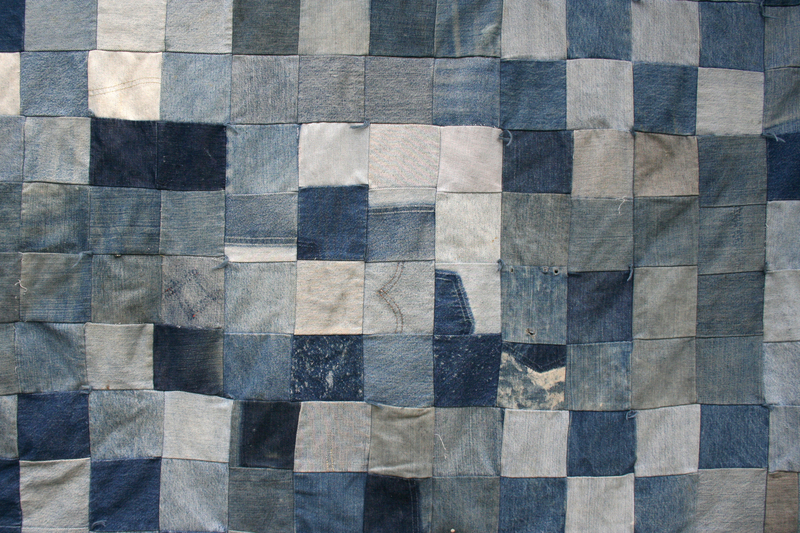The Art of Upcycling: How Trash Finds a New Purpose as Treasure
Upcycling is an innovative and eco-friendly approach that reimagines discarded items, transforming them into objects of higher value and utility. While the phrase "one person's trash is another person's treasure" might be old, its relevance is renewed through the principles of upcycling in the modern sustainability movement. In this comprehensive guide, we'll explore the art of upcycling, uncover its benefits, discover inspiring DIY practices, and learn how upcycling supports both creativity and the environment. Whether you are an enthusiast looking to start your upcycling journey or simply curious about how waste can morph into wonder, this article will illuminate every facet of this fascinating trend.
What Is Upcycling? Understanding the Concept
Upcycling--sometimes referred to as creative reuse--is the process of repurposing old or discarded materials to give them a new lease on life, often in ways that surpass their original worth or function. Unlike recycling, where materials are broken down before being remade, upcycling preserves the integrity of the original object, creatively altering it into something new and valuable.
Key Differences Between Upcycling and Recycling
- Upcycling: Retains the core materials and transforms them into higher-quality items, usually through creativity and craftsmanship.
- Recycling: Involves breaking down waste to its raw state to produce new, often lower-quality products.
- Upcycling minimizes energy consumption and environmental impact compared to recycling.
Through upcycling, what was once considered "waste" finds a new purpose and can become anything from home decor and fashion accessories to furniture and even artwork.

Why Upcycle? The Environmental and Social Benefits of Upcycling Waste
With growing concerns over pollution, resource depletion, and climate change, upcycling trash into treasure offers a compelling solution that benefits both the environment and society.
Environmental Advantages
- Reduces landfill waste: Upcycling diverts materials from landfills, extending the life cycle of products.
- Conserves resources: By reusing existing materials, less raw resource extraction is required.
- Decreases pollution: Lower demand for manufacturing reduces air and water pollution.
- Saves energy: Transforming old items into new often needs much less energy than producing goods from scratch.
Social and Economic Benefits
- Stimulates creativity and innovation: Upcycling inspires people to think differently about waste and use imagination to create something unique.
- Promotes local economies: Many upcycled goods are handcrafted, supporting artisans, small businesses, and local entrepreneurship.
- Encourages community involvement: Upcycling projects often bring communities together through workshops, markets, and group events.
- Education and awareness: Upcycling helps raise awareness about sustainability and responsible consumption.
By upcycling, society redefines waste as a resource, shifting perspectives and fostering a circular economy where items circulate for as long as possible, reducing the need for virgin materials.
Popular Upcycling Ideas: Turning Trash Into Treasure at Home
Upcycling is practical, accessible, and fun. There are endless ways to reimagine "waste" and create new treasures in your own home. Here are some inspiring ideas:
1. Upcycled Furniture
- Pallet sofas and coffee tables: Old shipping pallets can be transformed into rustic coffee tables or unique outdoor seating with a little sanding and a coat of paint.
- Bookshelf from ladders: Unused wooden ladders can become stylish shelving units for books, plants, or decorative items.
- Drawer organizers: Repurpose old dresser drawers as under-bed storage, bathroom organizers, or wall-mounted shelves.
2. Fashion and Accessories
- Denim projects: Old jeans can be turned into bags, aprons, or even patchwork quilts.
- Jewelry made from electronic waste: Circuit boards and wires can be crafted into bold necklaces or earrings.
- T-Shirt tote bags: Give worn-out tees a second life as reusable shopping bags.
3. Home Decor and Art
- Bottle vases and lighting: Glass bottles and jars make beautiful candle holders, vases, or pendant lights.
- Wall art from scrap: Pieces of metal, wood, or fabric can be arranged into eye-catching wall art or mosaics.
- Container gardens: Use old tires, buckets, or even shoes as creative planters for your garden or balcony.
The possibilities of upcycling are limited only by imagination. Even everyday household trash--such as plastic bags, cardboard tubes, or bottle caps--can find new purpose as practical, whimsical, or artistic creations.
The Creative Process: How to Start Upcycling at Home
If you're inspired to embrace the art of upcycling, here's a step-by-step guide to begin turning trash to treasure right where you live:
1. Identify What You Can Upcycle
- Look for common household waste: glass jars, tin cans, cardboard boxes, old clothing, broken electronics, and furniture.
- Think about the materials' shapes, sizes, and potential new uses.
2. Gather Tools and Supplies
- Essential upcycling tools may include scissors, glue, sandpaper, paint, thread, nails, a hammer, and screwdrivers.
- Consider additional embellishments such as fabric, beads, or plant clippings for added flair.
3. Seek Inspiration
- Find ideas from online platforms like Pinterest, Instagram, or YouTube.
- Browse DIY and upcycling blogs, or join local workshops and craft groups.
4. Plan and Design
- Sketch your ideas and decide how to combine materials harmoniously.
- Think about the function, durability, and aesthetics of your new creation.
5. Create and Experiment
- Start assembling your project, tweaking your approach as you go.
- Don't be afraid to make mistakes--upcycling thrives on experimentation and learning from trial and error.
6. Share and Celebrate
- Showcase your upcycled treasures on social media or at local fairs and markets.
- Gift your creations to friends or sell them, spreading the message of sustainability and creative reuse.
Upcycling at home is both practical and personally rewarding, helping you reduce waste, save money, and infuse your living space with unique character.
Creative Upcycling Projects from Around the World
All over the globe, artists, designers, and communities are setting remarkable examples of sustainable upcycling. Here are a few inspiring stories:
The PET Lamp Project
Originating in Colombia, the PET Lamp project reuses plastic bottles and combines them with traditional weaving techniques to create stunning lampshades. These products not only reduce plastic waste but also support indigenous artisans and share their craft globally.
Terracycle
Terracycle, a US-based company, partners with brands and organizations to collect hard-to-recycle waste, turning everything from cigarette butts to ocean plastic into park benches, backpacks, and even playgrounds.
Artist Subodh Gupta
Indian artist Subodh Gupta is renowned for his monumental sculptures crafted from old kitchen utensils, pots, and pans. His works critique consumerism and showcase how even everyday items can become extraordinary art.
Many such projects prove that upcycled art and design can drive environmental change while inspiring beauty and dialogue.
Upcycling in Business: Innovative Companies Turning Waste Into Value
Today, upcycling has moved beyond homes and studios and entered the entrepreneurial mainstream. Businesses worldwide are building brands on the idea of transforming waste into high-value products.
Key Examples
- Ecoalf (Spain): Known for creating high-quality fashion items from ocean plastic and recycled fishing nets, Ecoalf's slogan is "Because there is no planet B."
- REPREVE (USA): This company transforms recycled plastic bottles into fiber for clothing, upholstery, and vehicle interiors.
- Recycled Brooklyn (USA): Designs and builds custom furniture from reclaimed wood and industrial scraps.
- Freitag (Switzerland): Makes iconic, durable bags and accessories from reused truck tarps and seat belts.
For these companies, upcycled products aren't just about profit--they symbolize a commitment to circular economy principles and environmental stewardship.
Common Myths and Misconceptions About Upcycling
Despite its many advantages, some myths about upcycling persist. Let's debunk a few:
- Myth: Upcycled products are always "cheap" or low quality.
Fact: Many upcycled goods are robust and valued for their craftsmanship and uniqueness. - Myth: Upcycling is only for artists or crafters.
Fact: Anyone can upcycle, and many projects require only basic skills and materials. - Myth: Upcycled items look unattractive.
Fact: With attention to design, upcycled pieces can be stylish, modern, and even luxurious.
By shifting mindsets and breaking outdated stereotypes, upcycling continues to gain momentum worldwide.
How Upcycling Supports the Circular Economy
The circular economy aims to redefine growth by focusing on positive society-wide benefits, separating economic activity from the consumption of finite resources. Upcycling forms an integral part of this vision by:
- Extending product lifespans and maximizing resource use.
- Reducing reliance on raw material extraction.
- Innovating ways to repurpose waste streams.
- Inspiring further sustainable design strategies.
Upcycling trash into treasure is a crucial step toward building more resilient, environmentally conscious economies and communities.

Tips for Sustainable Upcycling and Reducing Waste
To make your upcycling experience more effective and environmentally friendly, consider these best practices:
- Choose non-toxic materials: Avoid items coated with hazardous chemicals, especially when upcycling for home or garden use.
- Think functionally and aesthetically: Plan projects that are both beautiful and useful, ensuring they genuinely replace new purchases.
- Collaborate and share skills: Work with others, exchange ideas, and support local upcycling communities.
- Keep learning: Stay updated on techniques and trends through workshops, online courses, and sustainability forums.
- Prioritize lasting quality over fast trends: Well-made upcycled pieces often become family heirlooms or conversation starters.
Embracing the Future: The Lasting Impact of Upcycling
The art of upcycling isn't just about curbing waste--it's a philosophy that encourages creativity, responsibility, and appreciation for resources. Each upcycled project is an act of environmental advocacy, turning everyday trash into meaningful treasure. As more individuals and businesses adopt upcycling, society moves closer to a greener, more ethical future.
If you're ready to make a difference, start with just one upcycling project today. Transforming your waste can spark inspiration and passion, leading to a lifelong journey of creativity and sustainability.
Remember: Every piece of trash has the potential to be a treasure--it's simply waiting for your imagination to take hold.
Key Takeaways: The Value of Upcycling
- Upcycling reimagines waste as a resource, giving discarded items a new, valuable purpose.
- It's sustainable, economical, and creatively fulfilling, reducing environmental impact and landfill waste.
- Everyone can contribute, from DIY enthusiasts to global businesses.
- The possibilities for upcycling are endless--start small, dream big, and watch your trash become treasure.
Join the upcycling revolution today and be a part of the solution--let your creativity turn trash into a brighter, more sustainable tomorrow!
```